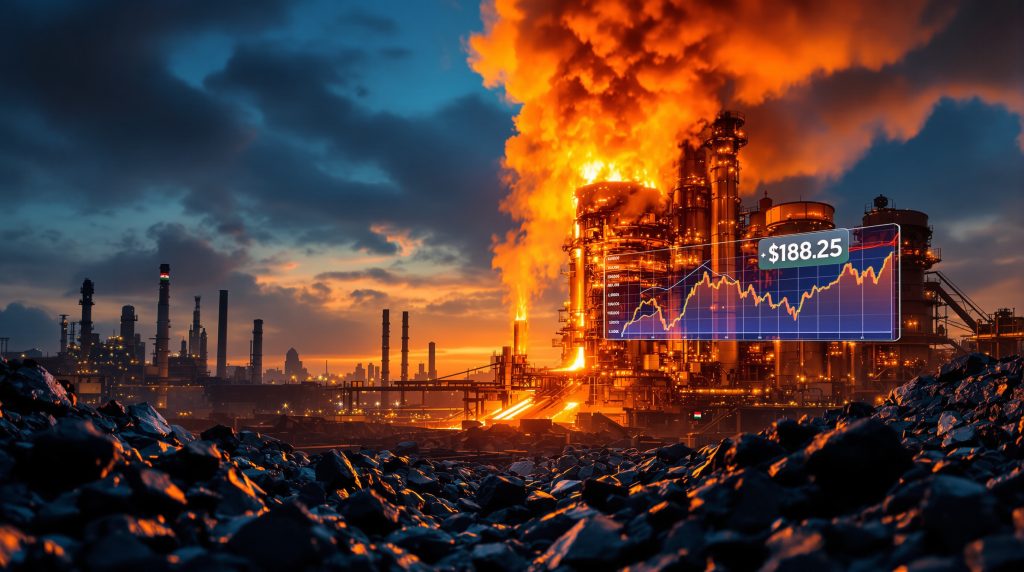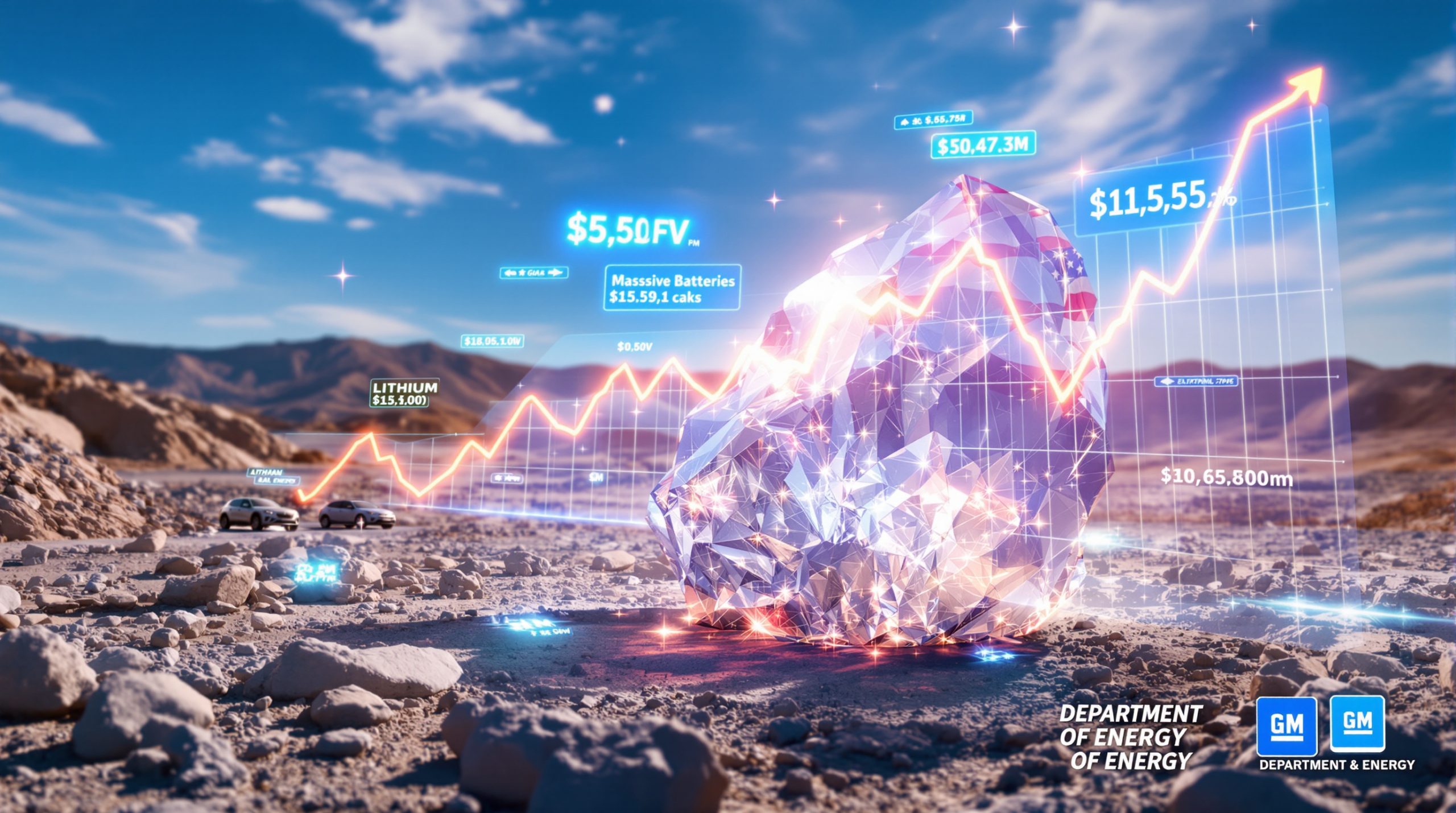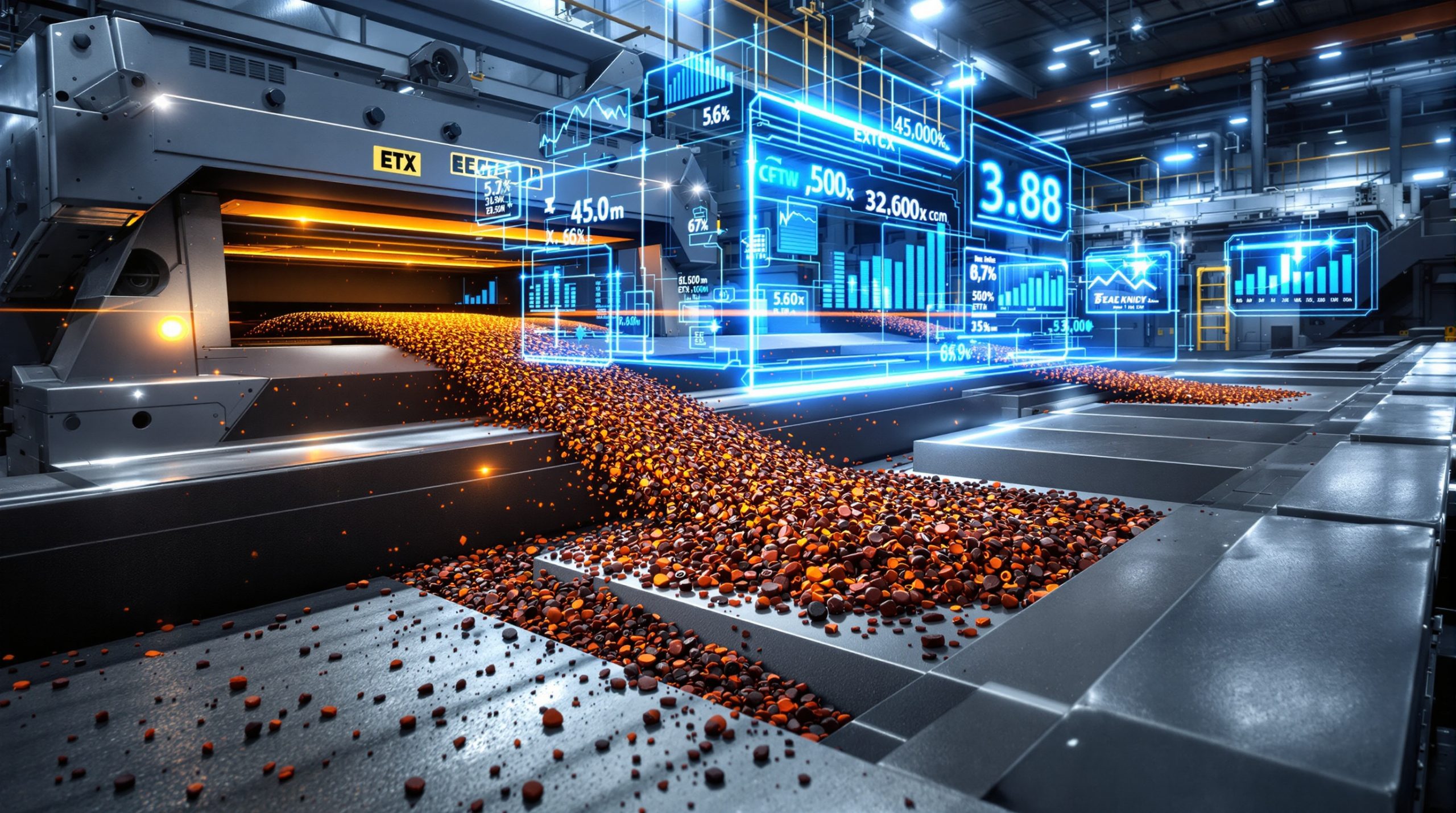How Is Global Metallurgical Coal Demand Evolving?
Metallurgical coal faces a complex market landscape characterized by short-term challenges and long-term structural shifts. Current market indicators show prices hovering around four-year lows, with benchmark futures on the Singapore Exchange dropping to $173.50 per ton in March 2025 before stabilizing around $188.25 by September. This price weakness has prompted production suspensions, as evidenced by BHP Group's recent closure of its Saraji South mine in Queensland, Australia.
Despite these immediate challenges, the medium to long-term outlook presents a different picture driven by increasing steel production demands in developing Asian economies, limited new metallurgical coal supply, and a slower-than-anticipated transition to green steel technologies. The recent South Africa coal boost represents just one example of continued investment in this sector despite current market pressures.
Current Market Dynamics and Price Trends
The metallurgical coal demand in 2025 has experienced significant downward pressure due to global steel production declining 1.9% in the first seven months of 2025, ample supply from major producing countries, and economic headwinds affecting industrial activity worldwide.
This has created a challenging environment for producers, particularly those with higher operating costs or facing increased taxation, as evidenced by Queensland's royalty increases to 20% for coal priced above A$175 ($117) per ton and 40% for prices exceeding A$300. Furthermore, tariff impacts on markets have added another layer of complexity for international coal traders.
Who Controls the Global Metallurgical Coal Supply Chain?
The seaborne metallurgical coal market remains highly concentrated among a few key exporting nations:
| Country | 2024 Exports (Million Metric Tons) | Global Market Share |
|---|---|---|
| Australia | 154.0 | 52% |
| United States | 51.5 | 17% |
| Russia | 38.4 | 13% |
| Canada | 28.0 | 9% |
| Others | 27.1 | 9% |
Australia's dominant position stems from its high-quality reserves, established infrastructure, and proximity to Asian markets. This concentration creates potential supply vulnerabilities, particularly as few new mines are planned globally. Canada's position in this market is increasingly challenged by energy transition challenges affecting its broader resource sector.
Supply Constraints and Development Outlook
The supply outlook appears increasingly constrained, with only three confirmed new metallurgical coal mines scheduled to begin operations before 2030:
-
Pembroke Resources' Olive Downs project in Queensland, Australia
-
Another project in Queensland, Australia
-
One project in the United States
This limited pipeline of new developments coincides with several existing operations approaching the end of their planned production lifespans, creating a potential supply gap in the coming years.
Why Is India Becoming Crucial for Metallurgical Coal Demand?
India represents the most significant growth market for metallurgical coal, with plans to double its steel output to over 300 million tons within the next decade. Unlike China, which is gradually shifting toward alternative steelmaking technologies, India continues to expand its basic oxygen furnace (BOF) capacity, which requires metallurgical coal as a key input.
India's Steel Capacity Expansion Plans
The scale of India's steel sector growth is substantial:
| Steel Plant Type | Under Construction (Million Tons) | In Planning (Million Tons) |
|---|---|---|
| Basic Oxygen Furnace (BOF) | 20.0 | 179.0 |
| Electric Arc Furnace (EAF) | 5.7 | 20.4 |
This heavy emphasis on BOF technology signals sustained demand growth for metallurgical coal imports, as India primarily produces thermal coal domestically and must import most of its metallurgical coal requirements. As outlined by the International Energy Agency's coal market update, India's steel capacity expansion will be a key driver for metallurgical coal consumption through the decade.
How Are Green Steel Ambitions Affecting Metallurgical Coal Markets?
The steel industry's transition toward lower-emission production methods represents a significant long-term challenge for metallurgical coal demand. However, recent developments suggest this transition is occurring more slowly than initially projected.
Challenges Slowing Green Steel Adoption
Several factors have contributed to dampened enthusiasm for rapid green steel implementation:
-
Economic Barriers: The high capital costs of building green hydrogen plants necessary for direct reduced iron (DRI) production
-
Infrastructure Limitations: Insufficient renewable energy capacity to power hydrogen production at scale
-
Technical Hurdles: Ongoing challenges in scaling hydrogen-based reduction technologies to commercial viability
-
Market Realities: Continued construction of traditional BOF steelmaking facilities across developing Asia
These challenges have led many steelmakers to scale back their green steel ambitions in the near term, suggesting metallurgical coal will remain a critical component in global steel production for decades to come. The ongoing mining industry evolution will likely balance traditional coal extraction with newer technologies.
What Are the Long-Term Price Implications for Metallurgical Coal?
The combination of constrained supply and continued demand from traditional steelmaking creates a potentially favorable long-term price environment for metallurgical coal producers, despite current market weakness.
Price Support Factors
Several structural elements point toward stronger metallurgical coal prices in the medium to long term:
-
Limited New Supply: Few new mines under development to replace depleting operations
-
Asian Steel Growth: Continued expansion of steel production in India and other developing Asian economies
-
High Development Costs: New projects require sustained higher prices to achieve economic viability
-
Industry Consolidation: Major producers like BHP rationalizing production to focus on higher-margin operations
These factors suggest metallurgical coal prices will likely need to rise substantially from current levels to incentivize the development of new supply capacity required to meet future demand. According to the latest Fastmarkets analysis, this price recovery could begin as early as late 2025.
How Are Regulatory and Policy Changes Impacting the Sector?
Government policies and regulatory frameworks significantly influence both the supply and demand sides of the metallurgical coal market. Recent developments highlight the complex interplay between economic, environmental, and fiscal considerations.
Taxation and Royalty Regimes
Australia's Queensland state government increased coal royalties substantially in 2022, implementing a tiered structure that reaches 40% for prices over A$300 per ton. This policy change has been criticized by industry leaders, including BHP CEO Mike Henry, who cited it as a contributing factor in the company's decision to suspend operations at its Saraji South mine.
These higher taxation levels potentially impact the economic viability of existing operations and future development projects, potentially constraining supply growth from Australia, the market's dominant exporter.
Environmental Policies and Carbon Reduction Targets
While environmental policies aim to reduce carbon emissions from steel production, the practical implementation of alternatives to coal-based steelmaking faces significant hurdles:
-
Technology Readiness: Hydrogen-based DRI and other alternatives remain in early commercial deployment
-
Cost Competitiveness: Traditional BOF steelmaking maintains economic advantages in many markets
-
Infrastructure Requirements: Green steel technologies require substantial supporting infrastructure
-
Regional Disparities: Varying climate policies create uneven transition pressures across markets
These factors have contributed to a more measured pace of transition away from metallurgical coal use in steelmaking than many policy frameworks initially envisioned. Despite these challenges, the industry continues to explore mining decarbonisation benefits across various operational aspects.
What Does the Future Hold for Metallurgical Coal Markets?
The metallurgical coal market appears positioned for a potential revival from current price doldrums, driven by fundamental supply-demand dynamics that transcend short-term market weakness.
Key Trends to Watch
-
India's Steel Expansion: Continued growth in Indian steel production and metallurgical coal imports
-
Supply Rationalization: Further production cuts from higher-cost operations if prices remain depressed
-
New Project Development: Timing and scale of the limited new mine projects currently in the pipeline
-
Green Steel Progress: Pace of technological advancement and commercial deployment of alternative steelmaking methods
-
Chinese Steel Production: Evolution of China's steel sector amid economic restructuring and environmental policies
These interconnected factors will shape the trajectory of metallurgical coal demand and pricing over the coming decade, with supply constraints potentially creating price support even as the long-term transition toward greener steelmaking technologies continues.
FAQ: Understanding Metallurgical Coal Markets
What is the difference between metallurgical coal and thermal coal?
Metallurgical coal (also called coking coal) is primarily used in steel production due to its high carbon content and specific chemical properties that allow it to form coke when heated. Thermal coal is used mainly for electricity generation and has different chemical characteristics. Metallurgical coal typically commands significantly higher prices due to its specialized applications and more limited availability.
Why does steel production require metallurgical coal?
Traditional steel production using the basic oxygen furnace (BOF) method requires metallurgical coal to create coke, which serves multiple critical functions in the blast furnace:
-
Providing the high temperatures necessary to melt iron ore
-
Acting as a reducing agent to convert iron ore into liquid iron
-
Creating a permeable structure that allows gases to flow through the furnace
-
Providing carbon that becomes incorporated into the steel
How might hydrogen-based steelmaking impact metallurgical coal demand?
Hydrogen-based direct reduced iron (DRI) technology replaces coal with hydrogen as the reducing agent in iron production. If widely adopted, this would significantly reduce metallurgical coal demand. However, the transition faces substantial challenges including:
-
High capital costs for new facilities
-
Requirements for massive amounts of green hydrogen
-
Need for renewable electricity to produce that hydrogen
-
Technical limitations in producing certain steel grades
These factors suggest a gradual rather than rapid displacement of metallurgical coal in steelmaking.
Which countries are the largest importers of metallurgical coal?
China, India, Japan, and South Korea represent the largest importers of seaborne metallurgical coal. China's import levels fluctuate based on domestic production and policy decisions, while India's imports continue to grow steadily with its expanding steel sector. Japan and South Korea maintain relatively stable import levels to supply their established steel industries.
Want to Capitalise on the Next Major Mineral Discovery?
Stay ahead of the market with Discovery Alert's real-time notifications on significant ASX mineral discoveries, powered by our proprietary Discovery IQ model that transforms complex mineral data into actionable insights. Explore our dedicated discoveries page to understand how major mineral discoveries have generated substantial returns for early investors.




